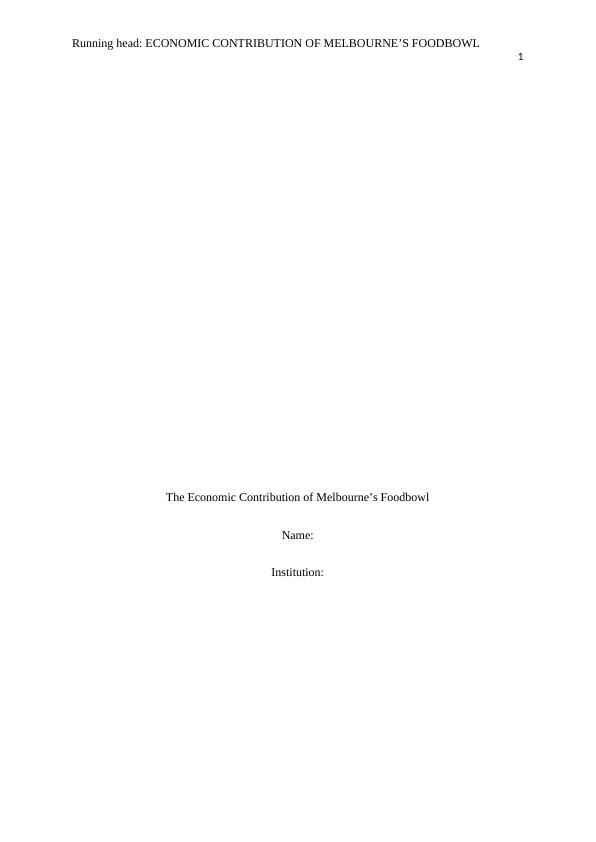The Economic Contribution of Melbourne’s Foodbowl
Produce an essay analyzing Deloitte's report on the economic contribution of Melbourne's foodbowl using Business Statistics theory, concepts, tools, and terminology.
5 Pages877 Words83 Views
Added on 2023-06-13
About This Document
This essay discusses the contribution of Melbourne’s food bowl to the Australian economy. Melbourne’s food-bowl constitutes over 1.7 million hectares of agricultural land. The total contribution of Melbourne to the regional economy amounts to $2.45 billion.
The Economic Contribution of Melbourne’s Foodbowl
Produce an essay analyzing Deloitte's report on the economic contribution of Melbourne's foodbowl using Business Statistics theory, concepts, tools, and terminology.
Added on 2023-06-13
ShareRelated Documents
End of preview
Want to access all the pages? Upload your documents or become a member.
The Economic Contribution of Melbourne's Foodbowl
|10
|1091
|449
Report On Economic Contribution Of Melbourne
|4
|936
|29
Methods for Data Analysis and Importance of the Article
|8
|1016
|224
Economic Analysis of Melbourne Foodbowl
|11
|1032
|172
Steinhardt Center as a model for sustainable urban agriculture With the growin
|5
|832
|458
Bee Pollination Management Assignment 2022
|15
|3945
|18


